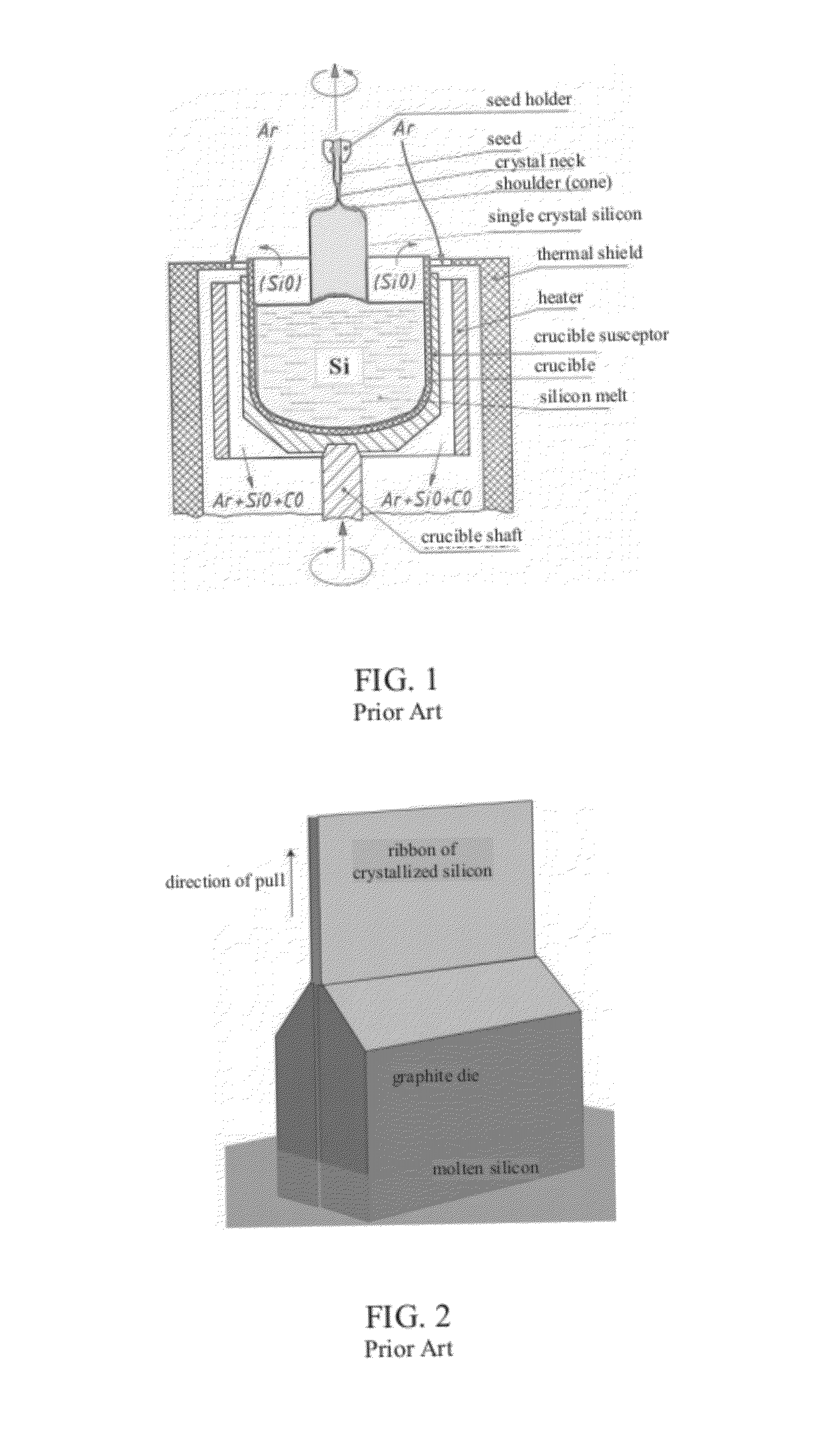Polariscope stress measurement tool and method of use
a stress measurement and polariscope technology, applied in the direction of instruments, instruments, force/torque/work measurement apparatus, etc., can solve the problems of increasing residual stresses, introducing additional residual stresses, and unavoidable high thermal gradients at the solid-melt interfa
- Summary
- Abstract
- Description
- Claims
- Application Information
AI Technical Summary
Benefits of technology
Problems solved by technology
Method used
Image
Examples
Embodiment Construction
[0113]This instant invention is directed to a tool for and method of measuring stress using a polariscope for thin, flat crystalline solids. Multi-crystal silicon will be discussed herein as a model material. The anisotropic stress optic coefficients are characterized for different crystal and stress orientations. The inventive polariscope system allows for the measurement of large samples. The full stress components are extracted from the measurement of the polariscope by the shear difference method. Finally, the thermally induced stress was modeled using ANSYS and compared to measured stresses.
[0114]In the last number of years, efforts have been made to develop techniques to obtain the in-plane residual stress in silicon, especially in poly-crystalline silicon, in order to improve the efficiency and reliability of photovoltaic cells. Wafers used in the photovoltaic industry are becoming larger and thinner. The residual stresses are generally higher in thin materials, and it takes ...
PUM
 Login to View More
Login to View More Abstract
Description
Claims
Application Information
 Login to View More
Login to View More - R&D
- Intellectual Property
- Life Sciences
- Materials
- Tech Scout
- Unparalleled Data Quality
- Higher Quality Content
- 60% Fewer Hallucinations
Browse by: Latest US Patents, China's latest patents, Technical Efficacy Thesaurus, Application Domain, Technology Topic, Popular Technical Reports.
© 2025 PatSnap. All rights reserved.Legal|Privacy policy|Modern Slavery Act Transparency Statement|Sitemap|About US| Contact US: help@patsnap.com



